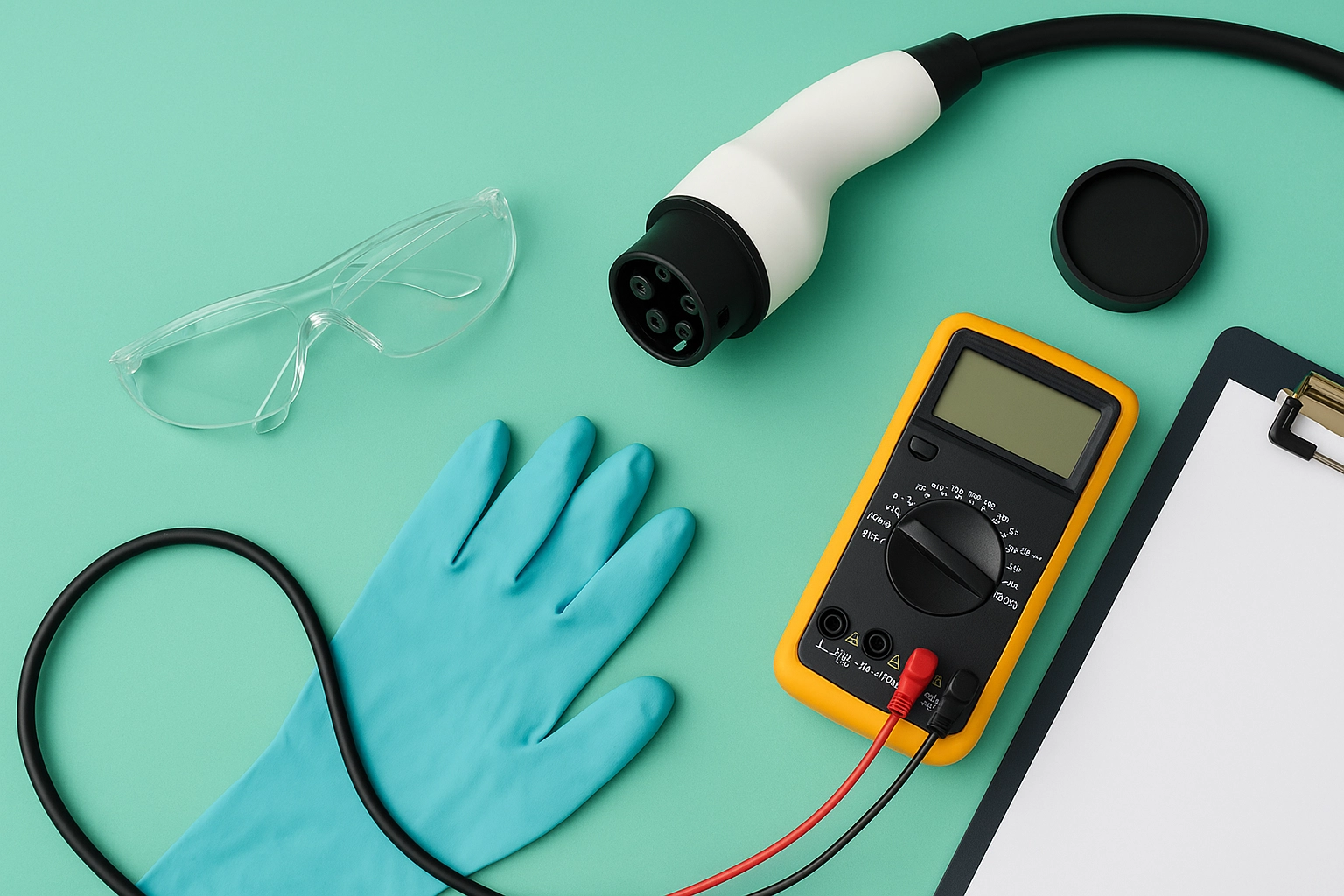IEC 61851 21 1 Electromagnetic Compatibility Charging Equipment Testing
The IEC 61851 series of standards provides comprehensive guidelines for the testing and certification of charging equipment used in electric vehicles (EVs). Specifically, IEC 61851-21-1, which focuses on electromagnetic compatibility (EMC), ensures that EV chargers can perform reliably without causing interference to other electronic devices. This standard is crucial for manufacturers aiming to comply with global regulatory requirements and ensure product performance in real-world conditions.
The testing under IEC 61851-21-1 covers a range of EMC-related parameters, including electromagnetic emissions (EMI), immunity to conducted and radiated interference, and the ability of the charger to operate within specified limits. Compliance with this standard ensures that EV chargers are robust enough to withstand external electromagnetic disturbances while minimizing their own emissions.
The testing process is rigorous, involving both laboratory-based tests and field trials where applicable. This ensures that the equipment can handle a wide range of environmental conditions without compromising performance or safety. The results of these tests provide assurance that the charger will function correctly in all intended environments, thereby reducing the risk of product failure and enhancing user satisfaction.
Compliance with IEC 61851-21-1 is essential for several reasons. First, it helps manufacturers avoid costly recalls and legal issues by ensuring their products meet international standards. Second, it enhances brand reputation by demonstrating a commitment to quality and safety. Finally, compliance can open up new market opportunities in regions where these standards are mandatory.
The testing process typically involves the following steps:
- Preparation of the test specimens according to IEC guidelines
- Synthesis of the test environment using appropriate facilities and equipment
- Conduction of various EMC tests, including emissions and immunity tests
- Analysis of results against specified acceptance criteria
- Reporting and certification of compliance
Compliance with IEC 61851-21-1 is particularly important for the automotive sector. As electric vehicles become more prevalent, there is an increasing need to ensure that all components, including chargers, are designed and manufactured to operate effectively in diverse environments. This standard plays a critical role in achieving this goal.
Why It Matters
The importance of EMC testing cannot be overstated in the context of automotive charging equipment. In an era where technology is rapidly advancing, ensuring that devices function reliably under various conditions is paramount. EMC issues can lead to malfunctions, safety hazards, and reduced product lifespan.
EMC testing under IEC 61851-21-1 ensures that EV chargers:
- Operate without causing interference to other electronic devices
- Are not susceptible to external electromagnetic disturbances
- Avoid compliance issues with international regulations
- Safeguard against product recalls and associated costs
- Enhance brand reputation through consistent quality standards
- Create a safer and more reliable user experience
The results of these tests are critical for manufacturers, as they provide assurance that the charging equipment can operate effectively in real-world conditions. This is particularly important given the growing demand for electric vehicles, which require robust charging solutions to support their widespread adoption.
Moreover, compliance with this standard helps manufacturers navigate the complexities of global regulations. As countries around the world implement more stringent requirements on EMC, adherence to IEC 61851-21-1 can serve as a passport for entry into international markets. This not only broadens market opportunities but also fosters innovation by encouraging continuous improvement in product design and performance.
Scope and Methodology
| Test Type | Description |
|---|---|
| Conducted Emission Testing | Measurement of emissions through the power supply lines to ensure they do not exceed permissible limits. |
| Radiated Emission Testing | Determination of emissions in free space, ensuring they are within acceptable levels for public safety and interference. |
| Immunity to Conducted Interference | Evaluation of the equipment's ability to function correctly when subjected to conducted interference signals within specified frequency bands. |
| Immunity to Radiated Interference | Assessment of the equipment's resilience against radiated interference, ensuring it can operate without degradation in performance. |
The testing process is designed to simulate real-world scenarios, thereby providing a comprehensive assessment of the charging equipment's EMC characteristics. This includes laboratory-based tests conducted under controlled conditions as well as field trials where appropriate. The goal is to ensure that the equipment can operate reliably and safely in diverse environments.
Once the tests are completed, detailed reports are generated, summarizing the results against the specified acceptance criteria outlined in IEC 61851-21-1. These reports serve as a valuable resource for manufacturers, providing insights into areas where improvements may be necessary and ensuring compliance with international standards.
Competitive Advantage and Market Impact
- Enhanced Product Reliability: Compliance with IEC 61851-21-1 ensures that charging equipment operates reliably under various conditions, reducing the risk of product failures.
- Avoidance of Regulatory Issues: By ensuring adherence to international standards, manufacturers can avoid costly compliance issues and legal challenges.
- Broadened Market Opportunities: Compliance with this standard opens up new market opportunities in regions where these regulations are mandatory.
- Innovation and Differentiation: Continuous improvement in product design and performance, driven by rigorous testing, can help manufacturers differentiate their products in the competitive automotive sector.
The impact of compliance with IEC 61851-21-1 is far-reaching. It not only ensures that EV chargers meet global standards but also enhances brand reputation through consistent quality and safety. This, in turn, can lead to increased customer trust and loyalty, which are critical factors in the success of any automotive product.
For manufacturers looking to enter new markets or enhance their existing presence, compliance with this standard is a strategic advantage. It helps navigate complex regulatory landscapes and opens up opportunities for innovation and growth in the rapidly expanding electric vehicle sector.





